The Roots Run Deep
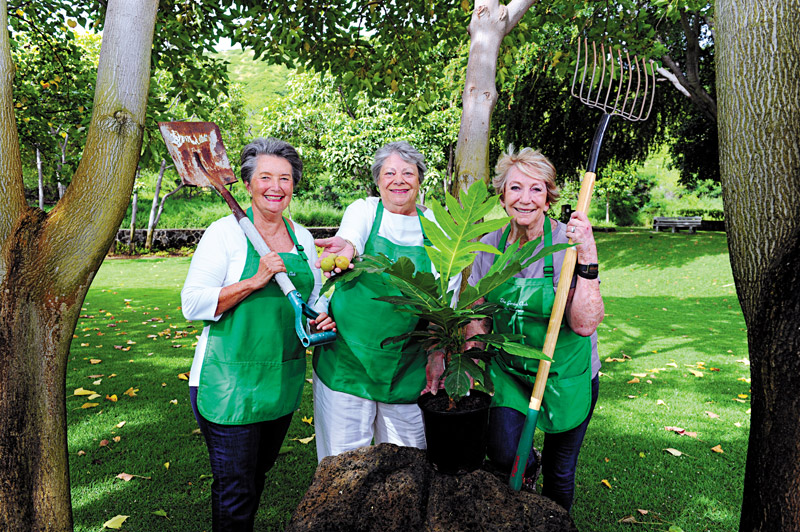
Club members Tanya Alston, Alice Guild and Priscilla Growney show off one of the ‘ulu fi ti trees members are growing for this year’s show — amidst the kukui nut trees they grew back in 2009.
Garden Club of Honolulu brings community service and a love of nature together in its May ower show, themed “Rooted In Paradise.”
Every three years, Garden Club of Honolulu puts on a flower show to end all flower shows.
Armed with flower arrangements, plants and crafts, club members take over Honolulu Museum of Art’s hallowed hallways for a juried exhibition of their very best efforts in horticulture, photography, floral design and more. Previous shows have paid tribute to the Hawaiian monarchy, Silk Road and even the very concept of Shangri-La.
This year’s show, taking place May 11-13, is a little different.
“When I was asked to be the chairman and choose a theme, I said, ‘If you don’t mind, I’d like to choose something I’m familiar with, which is my home,'” says Priscilla Growney, show chairman.
“I was born in 1940, and my life in Honolulu was so vastly different than anything is nowadays,” she muses.
She and other club members remembered traipsing around lush community farms in Mānoa or Kāhala, growing their own fruits and veggies at home, or stopping on the side of the road to pick flowers for scavenged bouquets.
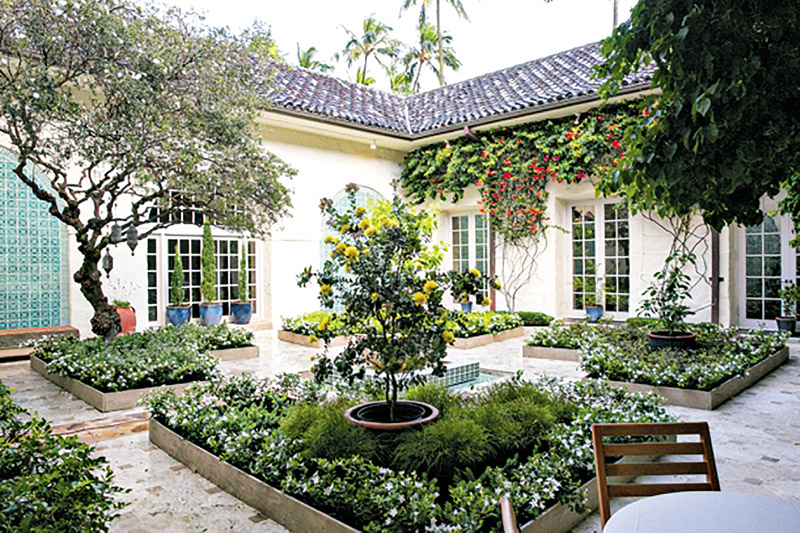
The museum courtyard will be decorated with club exhibits, as it was back in 2015 for Shangri La: The Flower Show. PHOTO COURTESY GARDEN CLUB OF HONOLULU
This year’s theme, “Rooted In Paradise,” pays tribute to that sense of a communal, close-knit Hawai‘i — and offers the perfect opportunity for the club to highlight its past icons and present community service.
Garden Club of Honolulu, an affiliate of Garden Club of America, was founded in 1930 with a mantra to “grow a more beautiful and sustainable world.” To this end, the invite-only club, which boasts approximately 180 members, hosts regular meetings, semiannual plant sales, classes at Lyon Arboretum, and its triennial show at the museum.
But the club’s open secret is that it is absolutely — if not more — dedicated to bringing beauty and sustainability to the general community, too.
“The Garden Club of Honolulu’s mission is to conserve, protect and preserve our natural environment through learning, teaching and action,” says Tanya Alston, a past club president and former show co-chairman.
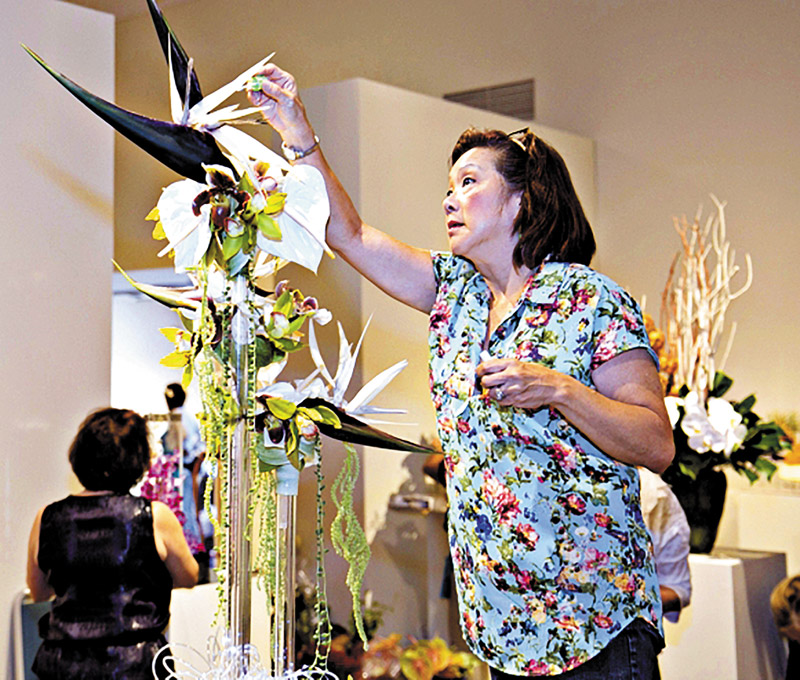
Holly Merchant. Scenes from 2015’s Garden Club of Honolulu show.
“We have a lot of behind-the-scenes projects,” Growney adds.
Take, for example, the Prehistoric Glen at Foster Botanical Garden — it was installed and is still maintained by the club. The Nature Conservancy of Hawai‘i produced a pamphlet on invasive species in the state with the club’s help. The club also has provided funding for a new intern at the Wind-ward Zero Waste Schools Hui.
Ditto goes for the gardens at Washington Place (filled with plants beloved by Queen Lili‘uokalani), botanical identification plaques at Queen Emma Summer Palace (the club recently restored the 20-year-old signs it initially installed), new landscaping at Suzanna Wesley Community Center (plus an irrigation system), a backup generator for Lyon Arboretum’s endangered plant species lab, a healing garden at Straub Clinic, a rain garden at Mānoa Heritage Center, regular classes at Women’s Community Correctional Center and, well, the list goes on and on.
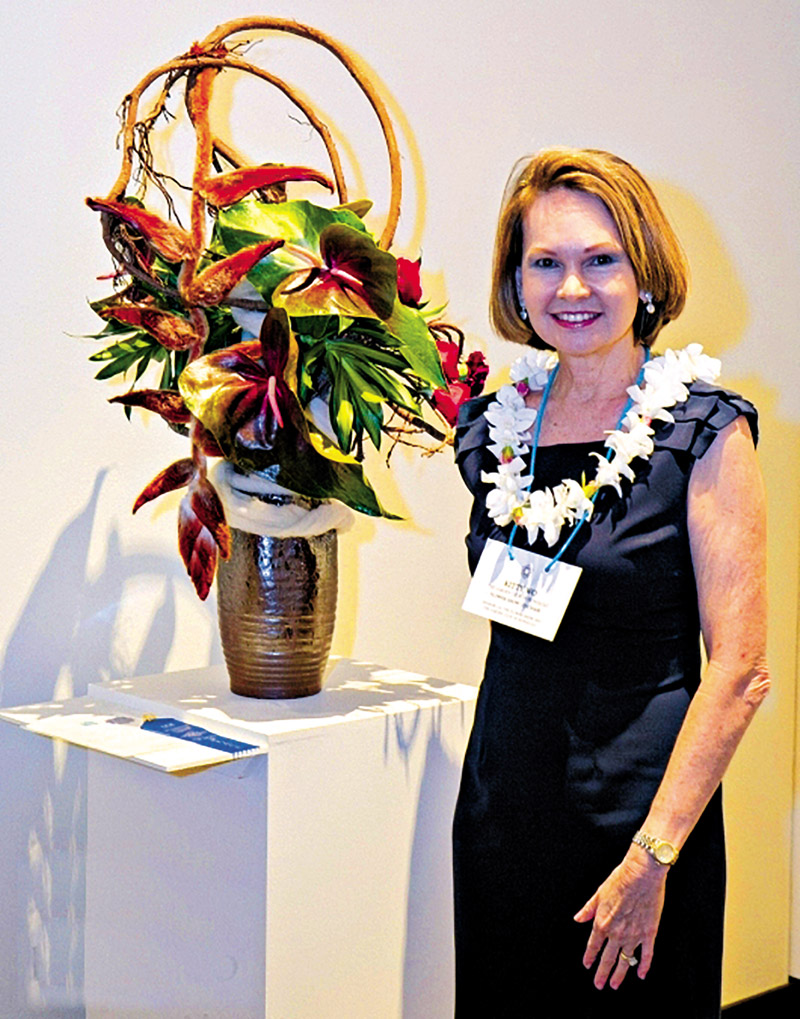
Kitty Wo.
“I think all of those things may not be one huge significant thing, but all of these things together certainly creates a better Hawai‘i,” Alston says.
This year, the club has dedicated part of the flower show’s educational exhibit, titled “Global Hunger Initiative,” to the National Tropical Botanical Garden’s Breadfruit Institute, and in particular to its new method for large-scale ‘ulu propagation.
Naturally, the club didn’t just learn about the project — they got hands-on and applied the lessons with tangible results through its yearly challenge class.
“This year we are growing ‘ulu fiti,” Alston says. “We will plant those out somewhere, or we will give them to people who may want an ‘ulu tree.”
Another major aspect of this year’s show is a floral tribute to local gardening icon May Moir, who famously produced Honolulu Academy of Arts’ floral displays every week for nearly 50 years. She died in 2001.
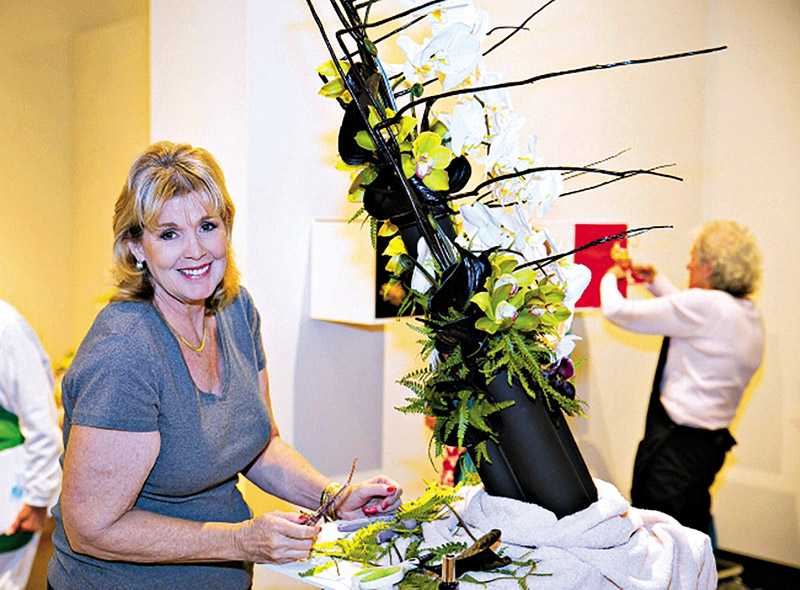
KC Collins
A student of Carolyn Peterson, Moir developed her own distinct style, utilizing foraged and donated plants, and would eventually teach a parade of students, including past club president and former show co-chairman Alice Guild.
“Every Monday morning, all new arrangements would go into the academy, and it was usually at least four big arrangements, and very often more than that,” Guild remembers. “She built up over years a cadre of volunteers who came in on Monday mornings.”
Moir’s style was absolutely groundbreaking in her time, even if it seems like the standard of today, Guild says.
“She was doing sculptural arrangements when everybody else was still doing bouquets. She could take one flower or one fruit and a few branches and create a lovely visual arrangement. We’ve come a long way over the years.
“The more modern look is the more manipulated, restrained presentation — which is what May was doing all along.”
The club plans to present seven arrangements in the Moir style during the flower show as part of its Floral Traditions exhibit. They will be displayed around the museum where Moir once reigned, another touch to the flower show’s “roots.”
“It’s an opportunity to see plants and flower arrangements that are created to be shown,” says Guild, “so that it’s very much like going to an art exhibit — only an alive art exhibit.”
Truly, nothing captures Garden Club of Honolulu’s mission more.
Garden Club of Honolulu’s 2018 flower show, Rooted In Paradise, runs from 10 a.m. to 4:30 p.m. May 11-13 at Honolulu Museum of Art. For more information, visit rootedinparadise2018.com.
HOME SWEET HOME
The healthy kukui nut trees pictured on MidWeek‘s cover also have a Garden Club of Honolulu origin story (of course).
The club grew kukui nut seeds and seedlings as part of its Na Pua Ali‘i Flower Show in 2009 (much as they are raising ‘ulu fiti trees this year), and the late Trudie McNaughton Taylor had the idea to plant them in an area badly in need of care.
Thus, 23 kukui nut trees found a home at what is today known as L°‘ahi Millennium Peace Circle Garden, near Kapi‘olani Community College. The club teamed up with Stevens World Peace Foundation to create a beautiful green oasis with plenty of shade and seating for visitors.






